Many flower growers widely use ground cover plants to decorate their backyard plots. Love for these flowers is understandable, since nothing beats a flower bed or lawn on which perennial flowering "rugs" are grown. You don't need to spend much effort in growing them.
It is enough just to choose the right place for planting, prepare the soil and do not forget to feed and water the plants. It doesn't matter if the suburban area is located in the north, central or south area. You can choose your own ground cover plants for any garden.
Content
Perennial ground cover flowers
Variegated creeping and flowering flowers are the best decoration for borders, ridges, flower beds. They are widely used to decorate near-trunk circles. trees and rocky gardens. Ground cover flowers are especially good, which bloom all summer and create their own multi-colored rugs on the flower bed.
But the decor is not the only feature of these colors. Growing ground cover plants in your backyard has many benefits:
- Plants do not allow the fertile layer of the earth to be blown away by the wind and washed away by rains.
- Colored rugs are great helpers in the fight against weeds. Growing abundantly, they simply displace many weeds from the infield.
- Ground cover plants grow and create a lush carpet in a fairly short time, while hiding the imperfections of the site.
- Low-growing plants enrich the land with oxygen and increase its fertility, and thus play the role of mulch.
With the right choice of plant varieties, you can easily make your site clean and well-groomed. You just need to pay attention to the fact that many undersized perennial plants prefer places in the sun, but some of them thrive in the shade.
Ground cover plants blooming all summer
One of the advantages of creeping perennials is that they begin their flowering from early spring to late autumn... In June, when crocuses, muscari, early types of tulips and daffodils, a lush bloom of the site begins, where beautiful "rugs" appear in all their glory.
Sedum or sedum
This undersized perennial is a great find for a rock garden or garden. Sedum forms creeping rugs, has abundant flowering and many varieties:
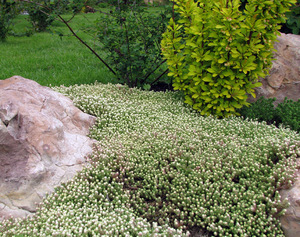 Evers sedum is covered with pink inflorescences in July;
Evers sedum is covered with pink inflorescences in July;- thick-leaved sedum begins to bloom in late spring with white inflorescences, creates dense thickets from round-shaped gray leaves and can reach a height of only a couple of centimeters;
- caustic sedum is a flower 8 cm high with small leaves and green and yellow “stars” blooming in late spring;
- spatulate sedum from the leaves of "roses" creates a carpet measuring 7 cm and begins to bloom in July with yellow flowers;
- stonecrop blooms in early autumn with crimson flowers, has flat leaves of a bluish tint and elegantly descending shoots;
- stonecrop has small oblong leaves and yellow flowers that bloom almost all summer;
- false sedum - is a hybrid with leaves painted in various shades of green, and pink, red, white buds blooming all summer.
Having planted various varieties of stonecrops on your personal plot, you can create a mini-garden or rock garden blooming all summer. Sedum you can decorate paths or make beautiful compositions out of them in decorative pots, on stumps or logs.
Stonecrop is undemanding to growth conditions, therefore it will be able to germinate even on occasional soil deposits. This plant does not require abundant watering and bait... In order for sedum to bloom beautifully and for a long time, it must be planted in sunny places of the backyard territory.
Subulate phlox
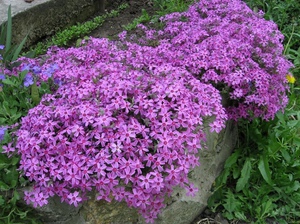 Plants, growing up to 16-21 cm in size, create a dense green carpet with flowers of purple, crimson, pink, white or red colors. For the first time phlox bloom in late April, and delight gardeners until early July. The next time the bushes begin to bloom in September.
Plants, growing up to 16-21 cm in size, create a dense green carpet with flowers of purple, crimson, pink, white or red colors. For the first time phlox bloom in late April, and delight gardeners until early July. The next time the bushes begin to bloom in September.
These ground cover plants love loose mineral soil and are suitable for sunny areas.
- The Douglas phlox is a small, low flower that starts flowering in late June.
- The styloid phlox grows up to 11 cm and has elongated, pointed leaves, similar to needles. This plant is gaining color in late spring, and blooms profusely until early July.
Several types of phlox planted on the same flower garden will bloom for a long time and look pretty beautiful.
This is a very unpretentious flower that is afraid of waterlogging and loves dry soils. When growing it, the soil must be mixed with sand and dolomite flour.
Phlox are versatile ground cover plants that can be grown in almost any type of flower bed. Plants will look great instead of a grass lawn, on an alpine slide, in a rockery and along a garden path. In flower beds, it is desirable to combine them with decorative deciduous perennials and alpine dim plants.
Palm or Kotula
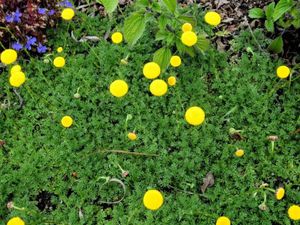
Rough, cinquefoil and comb are very popular among flower growers. This is a ground cover the creeping plant blooms with small rich yellow flowersthat give off a delicious smell. The brilliant palm leaves contrasts beautifully with the flowers blooming all summer.
Kotula is grown in shallow water and wet soil, and thrives on both sunny and partial shade. This plant is great for small pond areas.... The flower propagates well by seeds, creating a spectacular and bright border around the pond.
Corydalis yellow
Today, a rather rare perennial herb in culture, is characterized by long and abundant flowering. At the end of winter, when even the snowdrops have not yet begun to bloom, Corydalis can already please flower growers with their yellow inflorescences... But even in the absence of buds, the flower looks pretty beautiful. Its openwork leaves make the corydalis attractive.
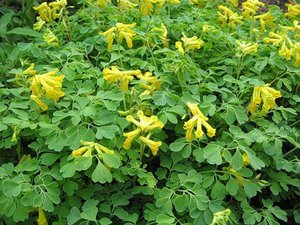 It is advisable to plant a ground cover plant on poorly compacted light soils. The plant blooms profusely in places well lit by the sun, but also feels great in partial shade. You can transplant the plant in any weather, at any age, and even in a state of flowering.
It is advisable to plant a ground cover plant on poorly compacted light soils. The plant blooms profusely in places well lit by the sun, but also feels great in partial shade. You can transplant the plant in any weather, at any age, and even in a state of flowering.
Growing up, the Corydalis forms a carpet measuring 16–31 cm, which will look great in the shade of trees and bushes and in the rock garden.
Highlander kindred
A groundcover perennial that blooms all summer long, suitable for decorating borders and looks great in group plantings.
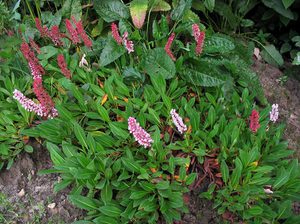 This flower reaches a height of 21–26 cm, has inflorescences collected in numerous small flowers and attractive heart-shaped foliage. A truly beautiful sight can be enjoyed at a time when the highlander blooms. At this time, the crown of this plant strongly resembles a white blanket.
This flower reaches a height of 21–26 cm, has inflorescences collected in numerous small flowers and attractive heart-shaped foliage. A truly beautiful sight can be enjoyed at a time when the highlander blooms. At this time, the crown of this plant strongly resembles a white blanket.
The plant grows best in shady and sunny locations and likes drained soil. Highlander kindred strongly does not like acidified placeswhich looks stunted and depressed. The culture tolerates frost well, but in a winter with little snow it needs protection with a covering material or spruce branches.
Carnation herb
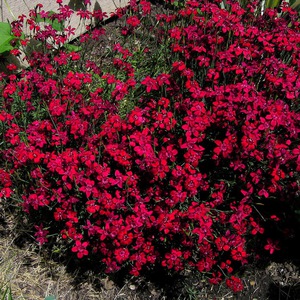 During almost the entire growing season, the herb carnation blooms. Small red-white or bright red flowers of this plant resemble flowers of an ordinary carnation... The herb can grow up to 16 cm in size, has small long bluish-green leaves and small ascending creeping stems.
During almost the entire growing season, the herb carnation blooms. Small red-white or bright red flowers of this plant resemble flowers of an ordinary carnation... The herb can grow up to 16 cm in size, has small long bluish-green leaves and small ascending creeping stems.
The plant does not like stagnant moisture, therefore it is advisable to plant it in fertilized, well-drained and light soil on the sunny side of the backyard area.
Many growers grow herb to decorate tree trunks. It not only looks attractive, but is also beneficial for fruit cultivated trees.
Groundcover flowers that bloom in early summer
To the backyard territory delighted with its beautiful flowering not only in the middle, but also in spring, as well as at the beginning of summer, beautifully flowering perennials can be planted on lawns, in rock gardens or flower beds.
Already from June, you can enjoy the flowering of soapwort or saponaria, which creates elegant dense pads with red or pink inflorescences. As a rule, in personal plots, you can see the pink buds of the basilicum, it can grow in height from 5 to 16 cm.
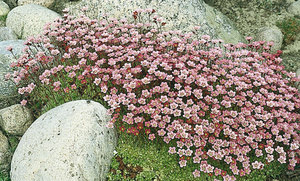 An attractive "rug" up to 6 cm in size is created by Veronica threadlike. On the creeping thin stems of this plant are round deep green leaves and blue inflorescences with dark streaks. Veronica begins to bloom in early summer.
An attractive "rug" up to 6 cm in size is created by Veronica threadlike. On the creeping thin stems of this plant are round deep green leaves and blue inflorescences with dark streaks. Veronica begins to bloom in early summer.
Thyme, thyme or Bogorodskaya herb is a medicinal herb that grows 3-9 cm in size, blooms from the beginning of summer. There are many varieties of thyme, so the color of the foliage and flowers of this plant can be very different. Most common among florists types of thyme with white-green and yellow-green leaves and red, pink, lavender and white flowers.
In early summer, creates an attractive silvery carpet of cerastium leaves or chickweed and white flowers. This ground cover flower, approximately 26 cm high, has thin, creeping shoots that harden and thrive to cover a large area.
Alyssum or beetroot begins flowering profusely in May. The stems of this plant are covered with lush racemes and small grayish leaves, as well as yellow flowers. The flower has many varieties and hybrids.that differ in height. So, for example, rock alyssum grows up to 40 cm in height, and mountain - from 6 to 11 cm.
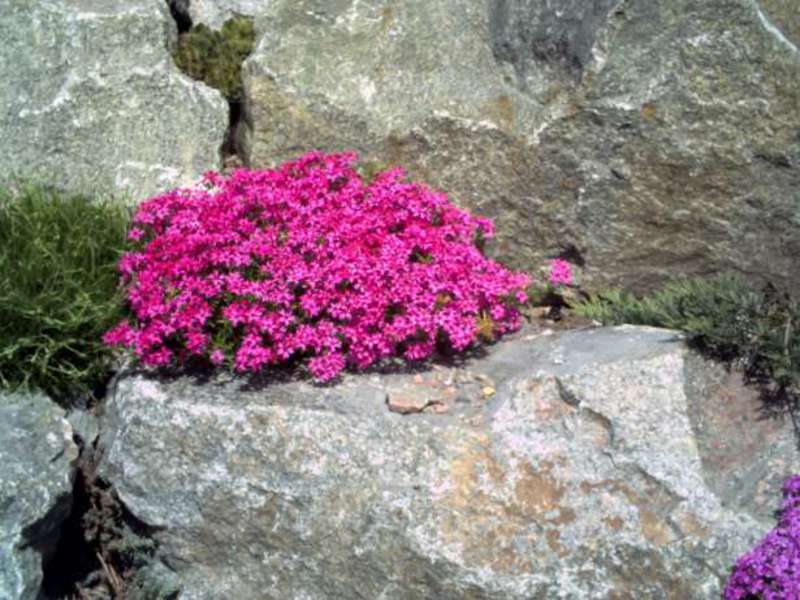
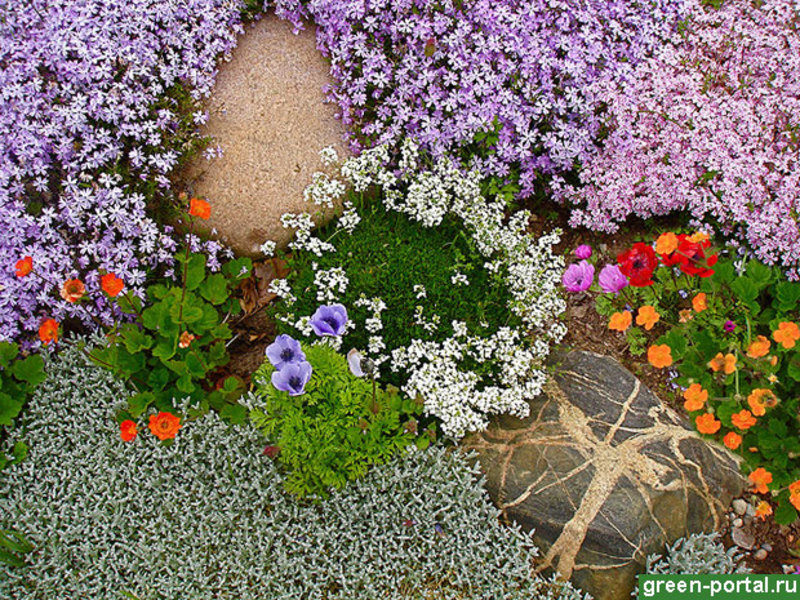
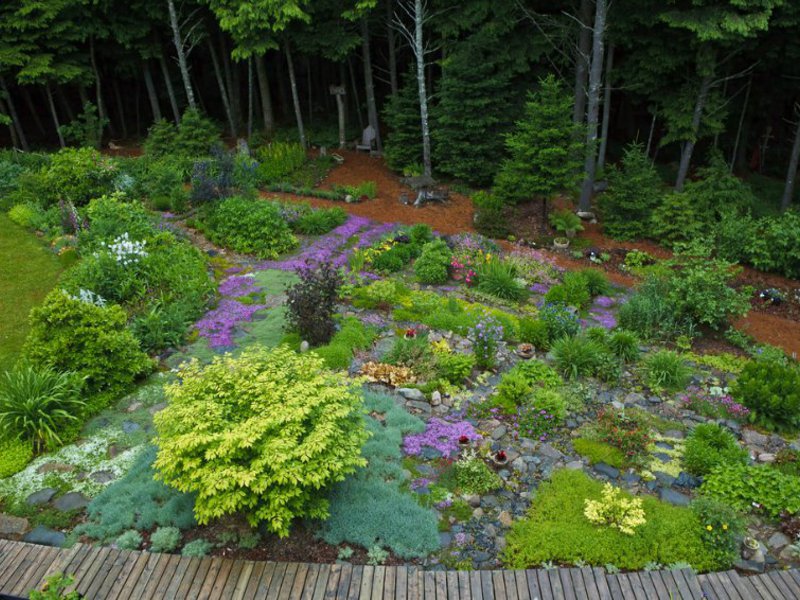
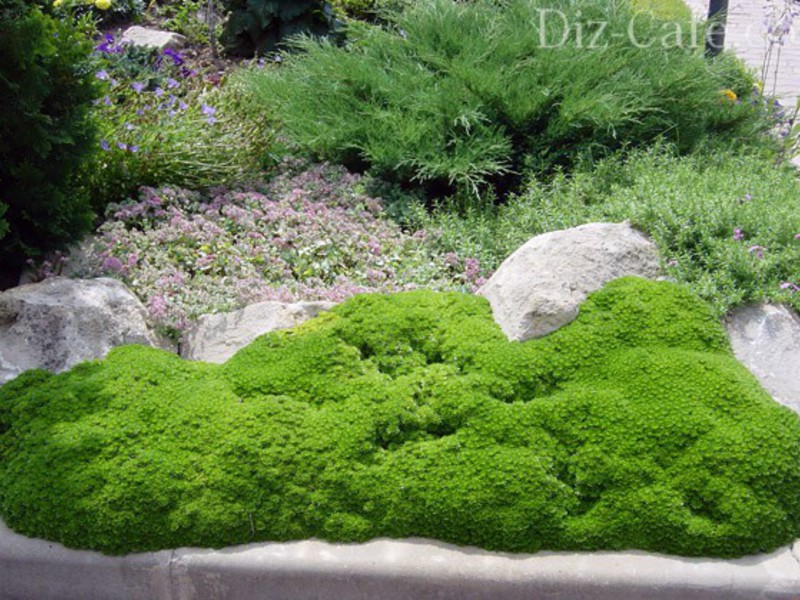
In late May and early June, aubretia or aubrieta blooms. Deltoid aubriet is quite popular among flower growers, double or simple flowers of which there are very different colors... A flowerbed with various species of aubre planted on it looks quite attractive.
Rezuha or arabis at the end of April begins to bloom with double or simple pink, white and red flowers. Arabis looks great on a slide or in a planter and has variegated leaves. A cascade of flowers falling from the support wall can charm any person. Usually, in backyard territories, you can see Caucasian rezuha up to 22 cm in size... Much lower, but also a very popular ciliata ciliata, reaching only 6 cm in size.
There are a lot of blooming ground cover applicants for a place in the garden plot. Choosing plants by flowering time, and adding long-flowering annuals or perennials, you can end up with a rock garden blooming all summer, a flower bed or a lawn.
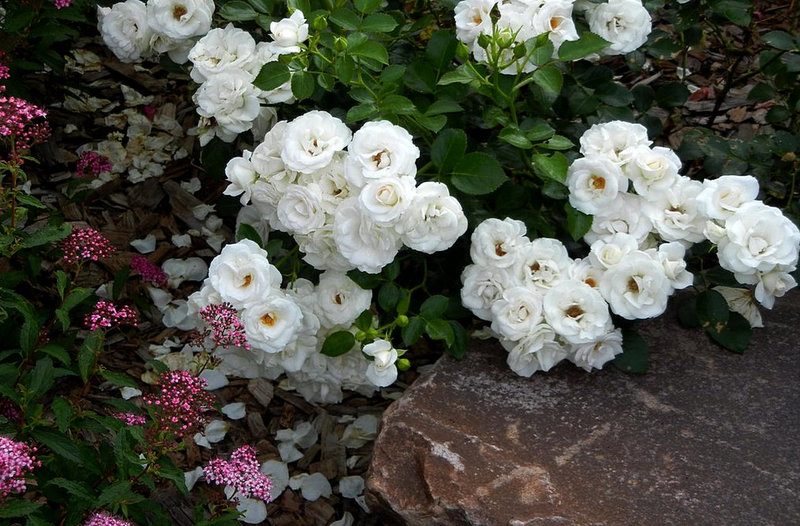
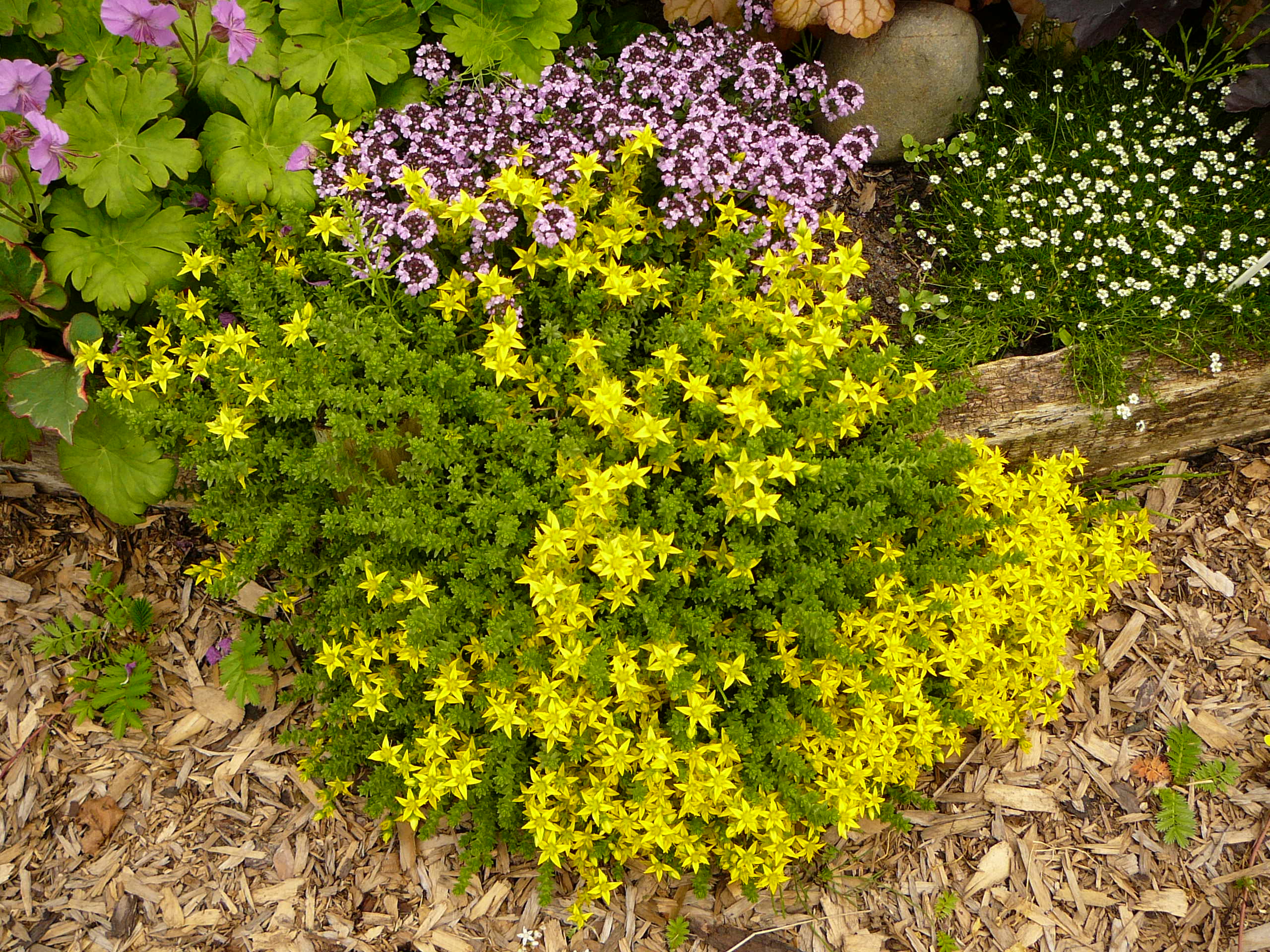
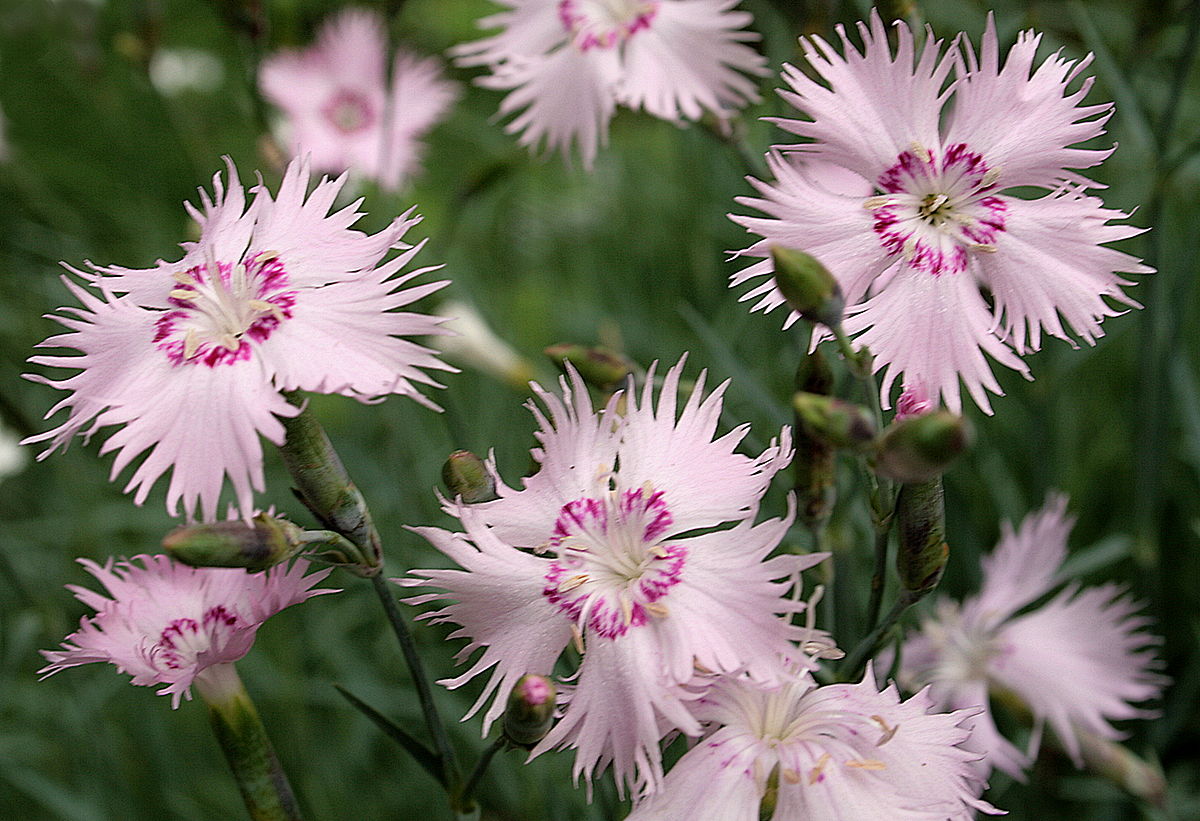
1 comment